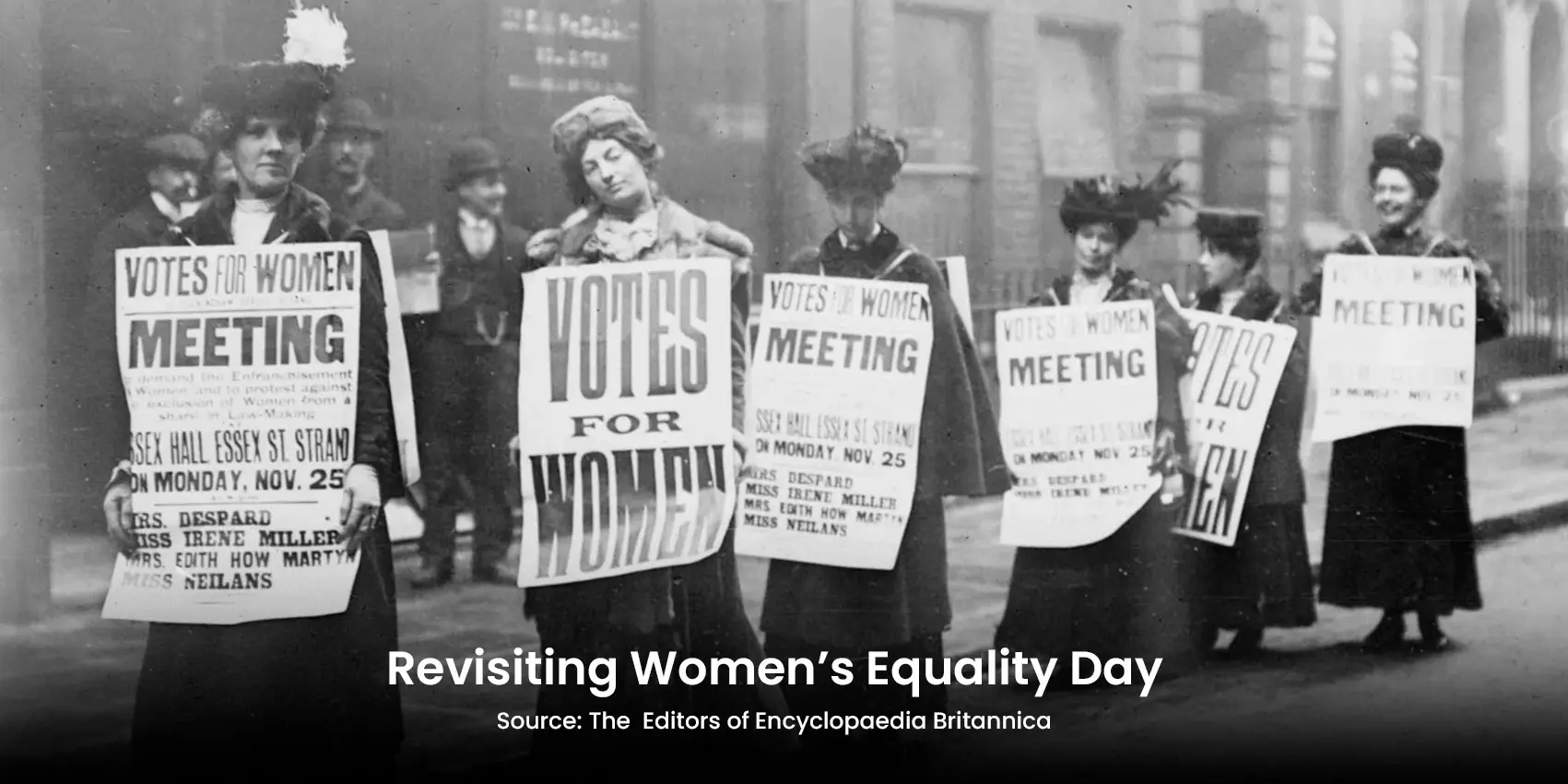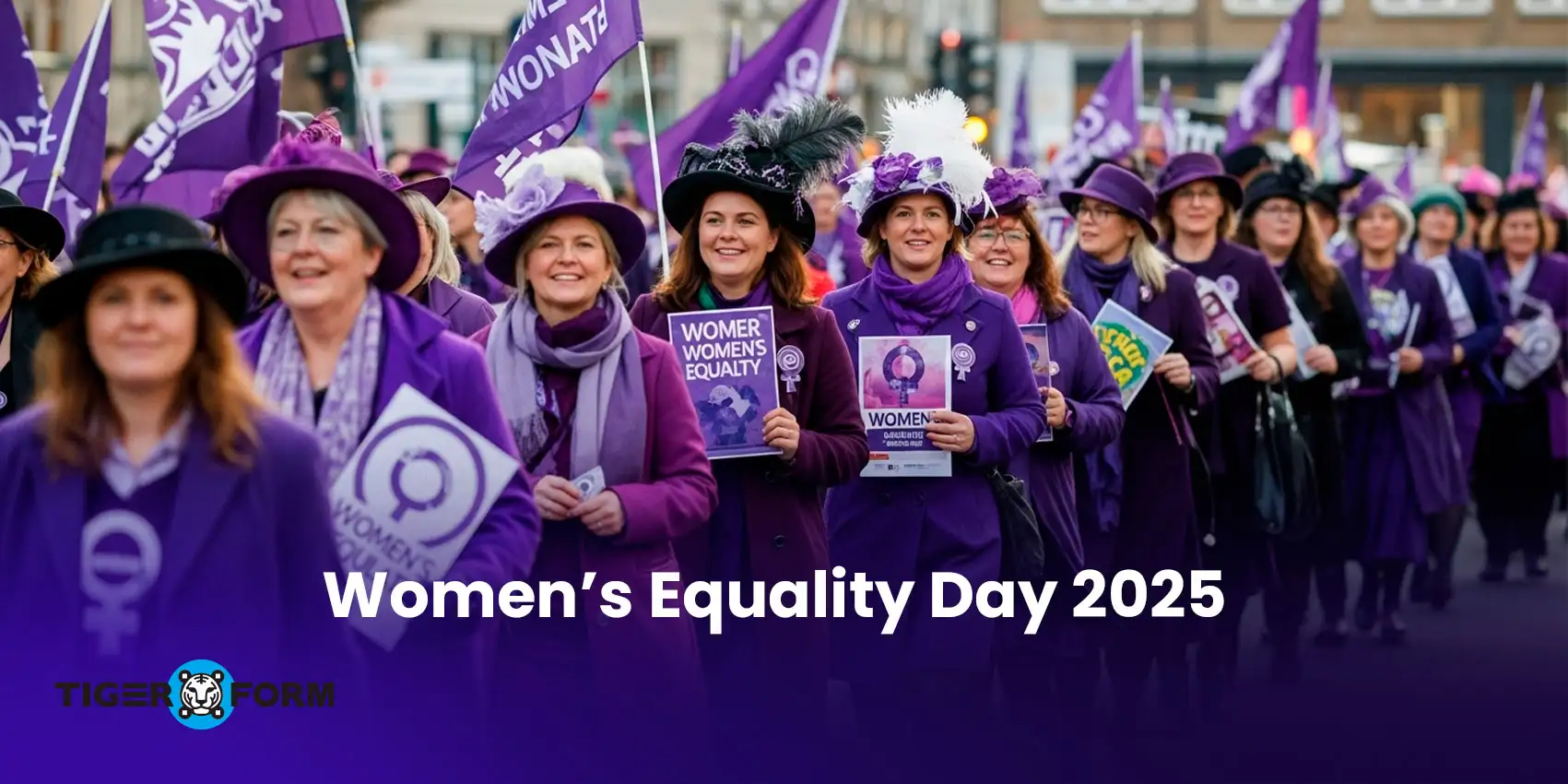
Women’s Equality Day is a time to reflect on how far women have come, while recognizing there is still more work ahead for true equality. The rights we enjoy today, such as voting, studying in any field, or earning fair pay, were won through years of determination by women who refused to give up. Yet some of the same challenges remain, just in new forms.
The commemoration on August 26 is a moment to pause, honor those who came and fought before us, and reflect on what still needs to change.
Now, how about revisiting the herstory and moments that shaped women’s rights, see how far we’ve come, and share heartfelt ways you can be part of the celebration. We will also introduce a form builder to help you manage your events for this commemoration.
Why is August 26 Women’s Equality Day?
On August 18, 1920, Tennessee became the last state to approve the 19th Amendment. Eight days later, on August 26, Secretary of State Bainbridge Colby certified it, giving women the right to vote after 72 years of activism since Seneca Falls.
This marks the celebration of women’s equality to this day. In 1971, Congresswoman Bella Abzug pushed for August 26 to be recognized during the Women’s Strike for Equality. President Nixon acknowledged it in 1972, and Congress made it official in 1973.
Although it is not a federal holiday, every U.S. president has since declared August 26 a national holiday honoring the 1920 victory and recognizing the continued fight for equality.
Timeline and milestones in women’s equality
19th Amendment
Women’s Equality Day celebrates the ratification of the Nineteenth Amendment on August 26, 1920, although the movement started way back in 1848. For over 70 years, women marched, spoke out, and were arrested to demand voting rights. Finally, in 1919, Congress agreed. Then, in August 1920, Tennessee decided to approve it.
Despite the positive change, some women of color still faced obstacles to voting in certain parts of the country. While this was a big first step, the fight for absolute equality wasn’t over.
Title IX
The legalization of Title IX on June 23, 1972, is another milestone for women’s equality because it banned sex discrimination in any school or college receiving federal funds. This covers the admissions, courses, athletics, scholarships, and more.
Before 1972, just 295,000 high school girls played sports. By 2012, that number jumped to 2.9 million. More women also started going to college, even in fields like engineering and medicine, which used to be mostly men. Women earn most college degrees now, and many jobs have more women because of Title IX. This law remains vital for fairness in education.
Equal Pay Act
While Title IX concerns education, the Equal Pay Act of 1963 targeted economic fairness. The Act, signed by President Kennedy on June 10, 1963, made it illegal to pay men and women differently for the same work. At the time, women earned only about 61% of men’s wages.
It was the first federal law to target wage discrimination based on sex. Progress has been steady but incomplete. By 2023, women working full-time earned about 83.6% of men’s median pay. Gaps remain, especially in male-dominated and leadership roles. The law set the “equal pay for equal work” standard and paved the way for later measures, such as the Lilly Ledbetter Fair Pay Act of 2009.
Violence Against Women Act
The Violence Against Women Act (VAWA), signed in 1994, was the first federal law to treat domestic violence and sexual assault as serious issues. It provided $1.6 billion for law enforcement training, victim services, and legal aid. It also created new rules letting police arrest stalkers across state lines and allowing courts to handle more abuse cases.
VAWA created the Office on Violence Against Women and funded thousands of shelters and crisis centers. Reauthorizations in 2000, 2005, 2013, and 2022 expanded protections to LGBTQ survivors, immigrant women, and college campuses. Studies link the law to a significant drop in domestic violence rates.
How to celebrate and honor Women’s Equality Day meaningfully

Equality Day for women is a time for ceremony, action, and reflection. To celebrate it meaningfully, people can engage in activities that educate, empower, and advance equality.
1. Learn and teach
One simple yet meaningful way to honor the day is to learn and teach the history. Your schools and communities may hold programs on women’s rights history, perhaps organizing a lecture, reading session, or trivia questions about suffragists like Susan B. Anthony or modern leaders like Shirley Chisholm.
Museums or libraries might showcase exhibits of “herstory,” highlighting lesser-known female pioneers. Storytelling events or book clubs focused on women’s achievements can bring history to life. Educating ourselves and others about the women’s movement’s milestones and struggles is a powerful tribute.
2. Host interactive, digital games
Make the celebration engaging with QR-powered games. Use TIGER FORM builder, a form QR code generator that fully integrates QR code customization with form building. You can create a quiz on women’s history or a trivia challenge about gender equality, then turn it into a QR form that participants can scan instantly.
Participants can scan the code with their phones to join instantly, whether they’re at school, work, or a public event. This makes learning interactive, quick, and accessible, sparking interest in women’s achievements.
3. Help women-focused causes
Another way is to support women’s aid organizations and charities. Many nonprofits help these literacy programs and shelters for abuse victims, women, and girls by donating money, spreading the word about such groups, or even volunteering your time. For hosts, you can use a volunteer registration form to manage the volunteers for your cause.
You can also invite your colleagues or friends to join hands with groups that promote the mentioned causes. As one outreach guide suggests, volunteer activities benefiting women’s shelters or rights organizations are a fitting way to commemorate the suffrage ratification.
4. Economic empowerment
Supporting women-owned businesses is a powerful way to celebrate the day. Shop at women-run stores, hire female contractors, or invest in women-led startups. Companies can audit supply chains to prioritize women vendors.
Even small actions like buying from women artisans or giving gift cards to female entrepreneurs make a difference. These steps boost economic inclusion and invest in women’s success.
5. Host discussion events and take action
The day is a chance to take real action; support equal pay laws, advocate for women’s rights, or join marches and petitions. Even small steps, like discussing women’s issues in your community through a public event registration form made with a form creator to manage your events.
Workplaces and schools can mark the day with discussions, workshops, or lessons on women’s history and rights. Companies can also feature women leaders, offer bias training, or highlight achievements in meetings.
6. Honoring symbolic colors
Wearing its symbolic colors is a simple but powerful way to honor the mentioned day, one of the notable August holidays. Many people choose purple, a color tied to dignity and justice since the suffragette movement (like the British suffragettes did, who used purple, white, and green).
Others wear white or gold (for hope and progress). Even small actions, like posting a photo in these colors with #WomensEqualityDay, can help spread awareness and start conversations. It’s an easy yet meaningful way to show support.
How far has gender equality progressed now?

Education
Women now earn most college and graduate degrees. Roughly half of young American women hold bachelor’s degrees, compared to 37% of men. They now lead in law, medicine, and psychology, a significant change from when these fields were mainly for men.
Politics
Political affiliations have also increased steadily, albeit slowly. The 118th U.S. Congress (2023-2024) includes 151 women, about 28% of all members. Women have reached high offices, including Vice President, Treasury Secretary, and Supreme Court justice. And over 12 states have women governors, yet political equality is still distant.
Pay gap
The pay gap is slowly decreasing, but still visible. As of 2023, women working full-time earn about 83.6 cents for every dollar men earn. The gap is narrower among younger workers, with women in their 20s and 30s earning 90-95% of their male peers’ wages.
This is much better than before, but equality has still not been achieved. Unfair caregiving burdens, women and men working different jobs, and discrimination keep the gap from closing.
Leadership and business
Women hold more C-suite and board positions than before, but numbers remain minimal compared to the actual balance. Approximately 10.4% of Fortune 500 CEOs are women, and fewer than one in three board members are women.
While over 12 million women-owned businesses exist in the U.S., women still face funding disparities in startups, especially in tech. These numbers reflect progress and demonstrate how the gender gap in business still exists.
Workforce
Forty-seven percent of the U.S. workforce is women, according to the U.S. Bureau of Labor Statistics (BLS). Most of these percentages are in education, healthcare, and service sectors. BLS data further show that female employment spiked at nearly 60% in 1999 and has been steady around 56-57%.
The stability is affected by childcare costs or the COVID-19 pandemic; rates might differ without these factors. Still, women have also started to enter traditional male-dominated jobs like STEM and construction.
Social and cultural influence
Women now have a growing presence in multiple fields compared to before. Many women are writing bestselling books, winning major film and music awards. Not only that, but they also have relevant voices in the news, public discourse, and digital media.
Support for social movements like #MeToo, Time’s Up, and other reproductive rights campaigns makes women’s voices grow louder.
Laws
Legal and federal laws protecting women have expanded, but remain uneven. Some companies offer paid parental leave, but no federal law guarantees it. The VAWA supports abuse survivors, yet 1-4 women still face domestic violence. Legal progress has been real, but there is still room for growth.

Celebrate women’s equality with TIGER FORM, then, now, and ahead
The story of Women’s Equality Day is one of persistence and courage. Every step forward was made possible by women who stood their ground. Their work opened doors we walk through today.
When we celebrate this day, we’re not just looking back but adding our voice to the ongoing journey. Whether you’re learning, speaking up, supporting women-led projects, or bringing people together with tools like QR code forms, you’re helping carry their work forward.
Let’s keep building a future where equality is not just a goal but the everyday reality for all women. Celebrate women’s right day with TIGER FORM!
FAQs
Is Women’s Rights Day a federal holiday?
No, it is not a day off or paid federal holiday, but an annual commemoration. Every President proclaims to recognize the date on that day, but the government does not close its offices. Instead, schools, organizations, and citizens observe it through events and education.
Is there a special color for Women’s Equality Day?
Yes, purple is widely recognized as the color of women’s equality. It was one of the colors of the women’s suffrage movement, symbolizing dignity and justice. Aside from purple, white, and gold, it has traditionally represented the fight for equal rights.
How is Women’s Rights Day different from International Women’s Day?
Women’s Rights Day honors the American women’s suffrage victory and falls on August 26. In contrast, International Women’s Day falls on March 8 and is a worldwide observance with roots in labor and socialist movements. It highlights women’s rights globally and often has an annual theme.
What current challenges does Women’s Rights Day highlight?
This day reminds us that despite progress, issues like the gender pay gap, underrepresentation in leadership, sexual violence, and lack of universal childcare or paid family leave remain.
